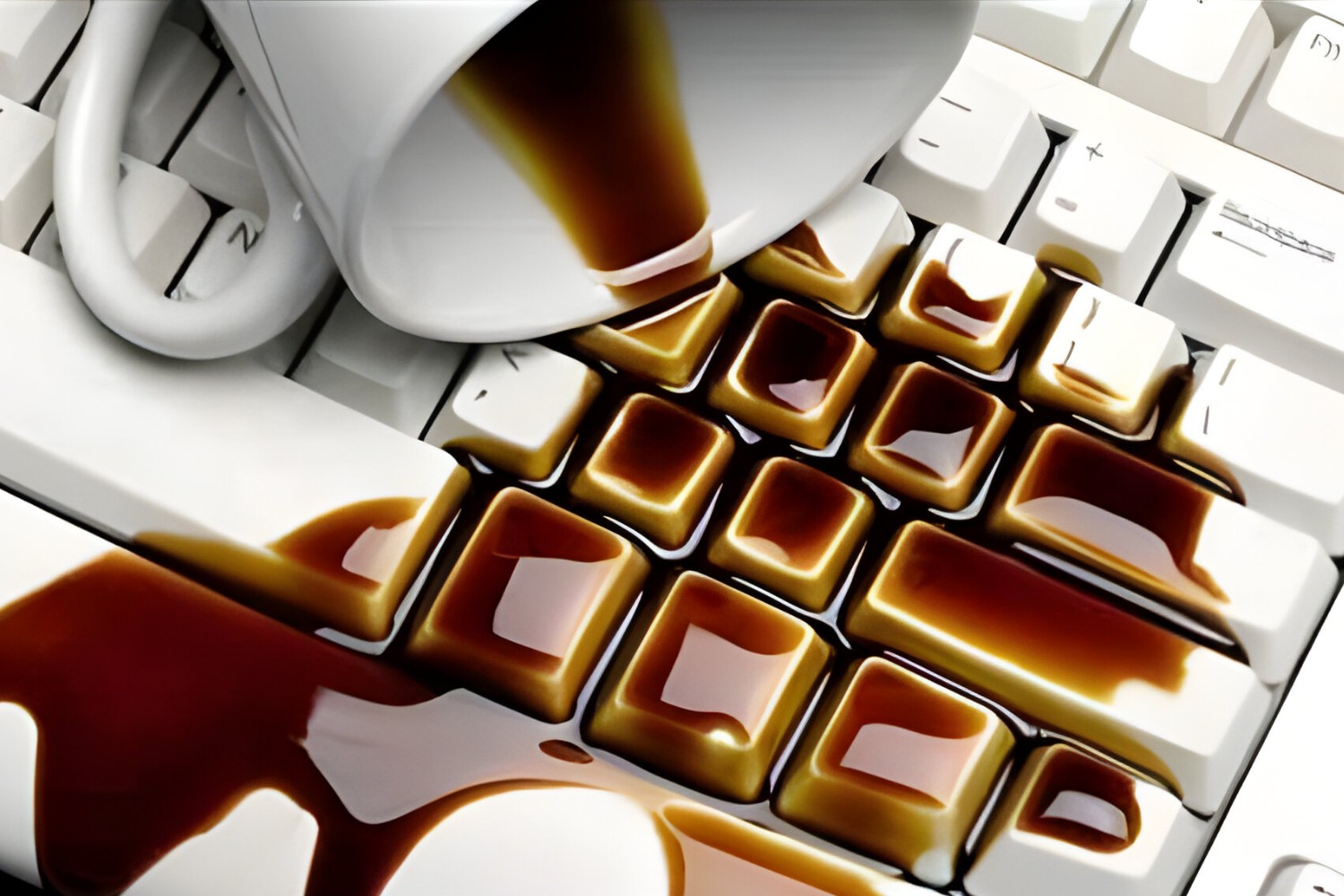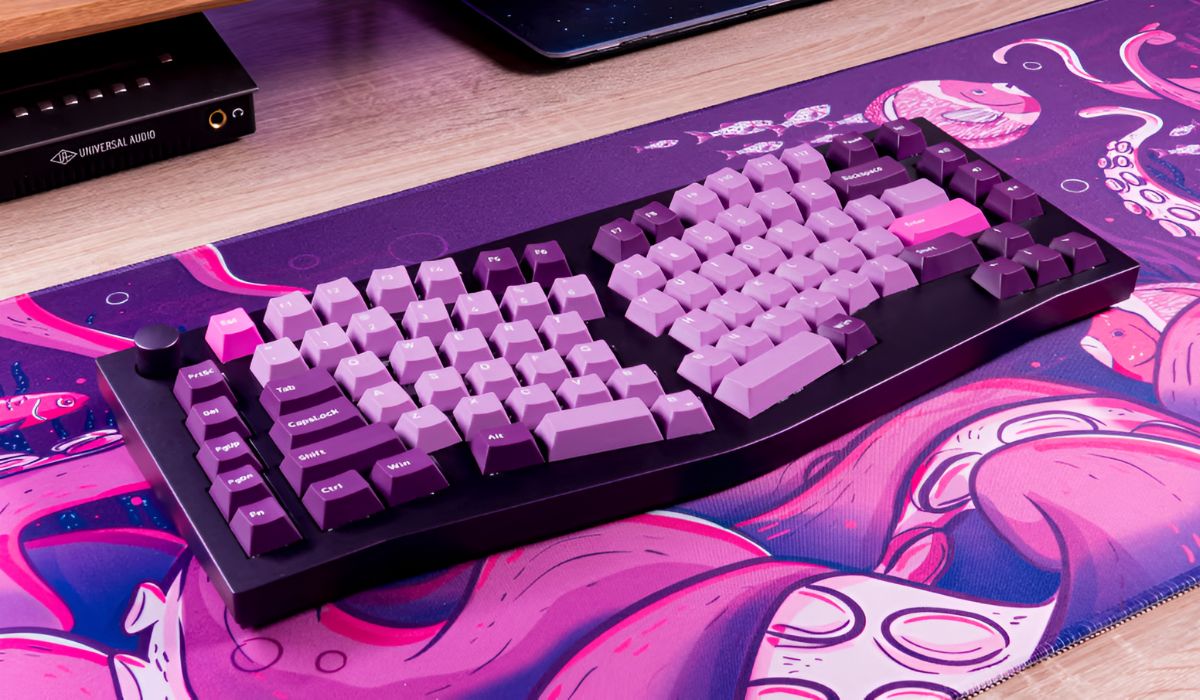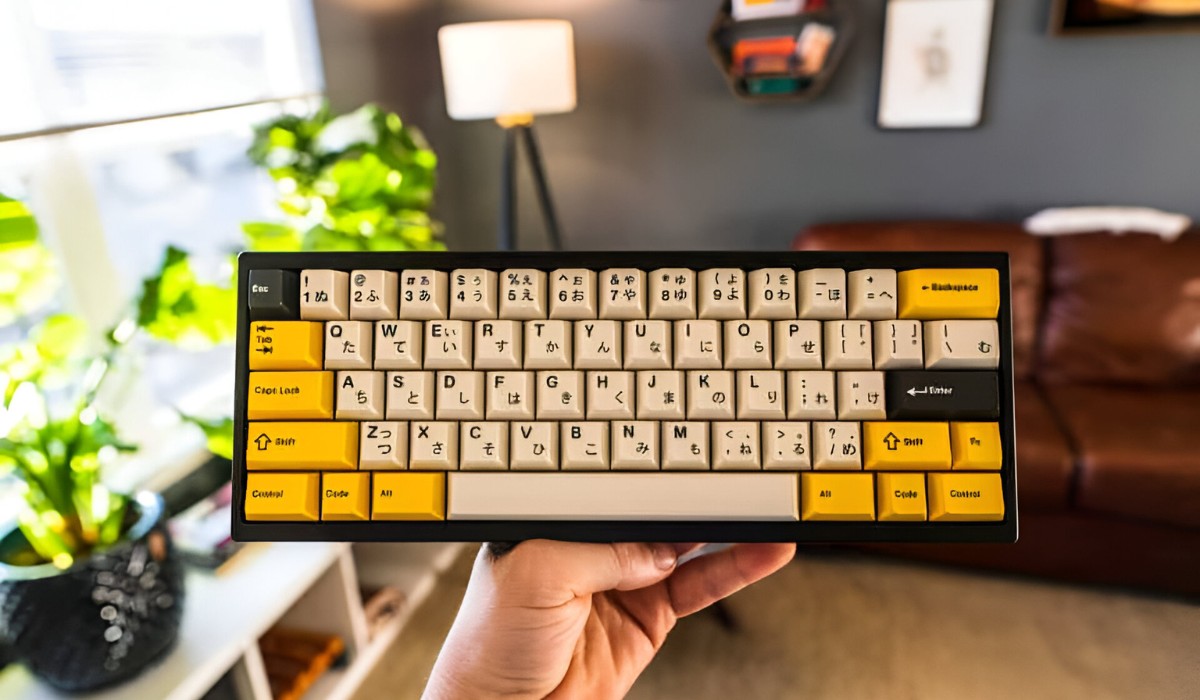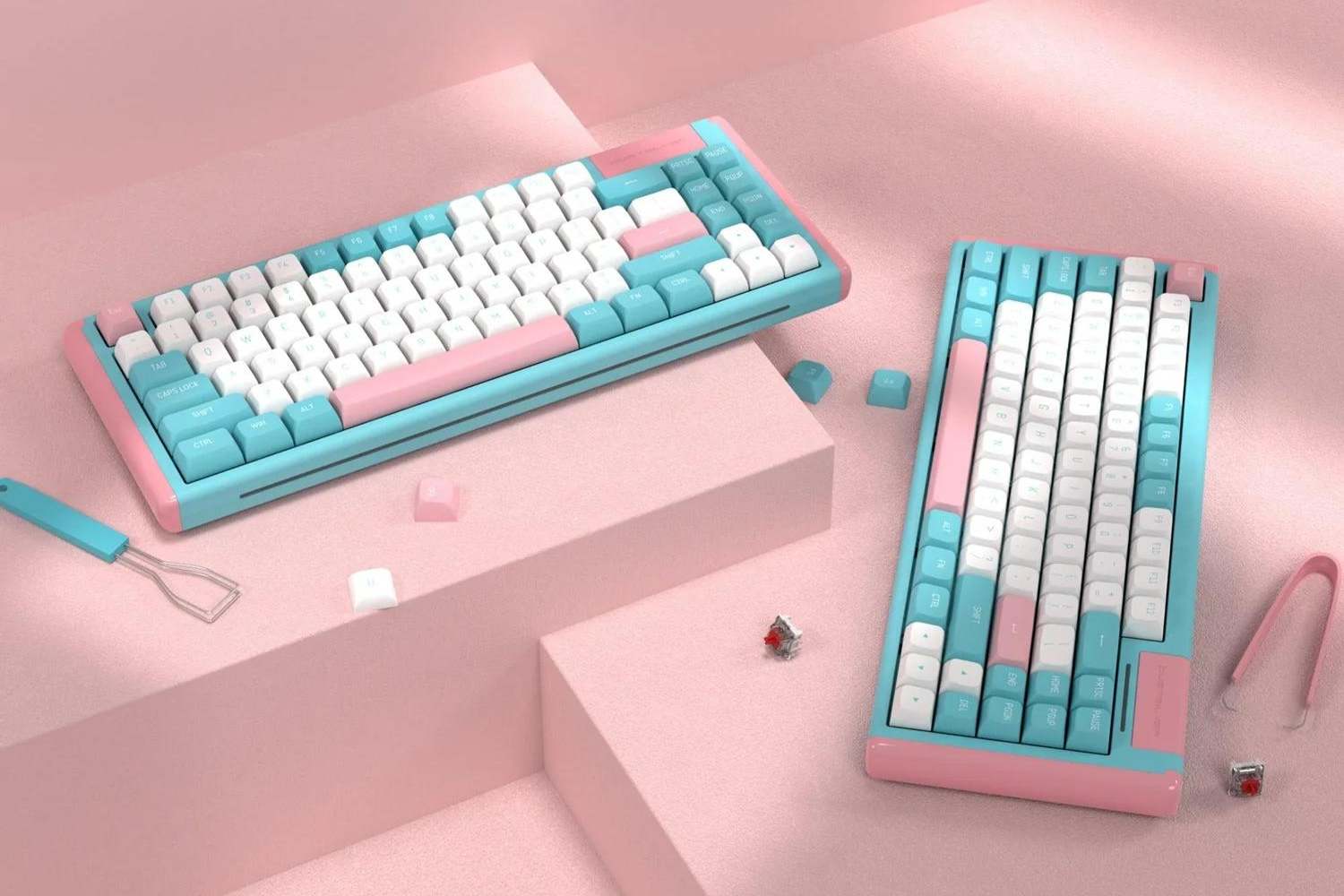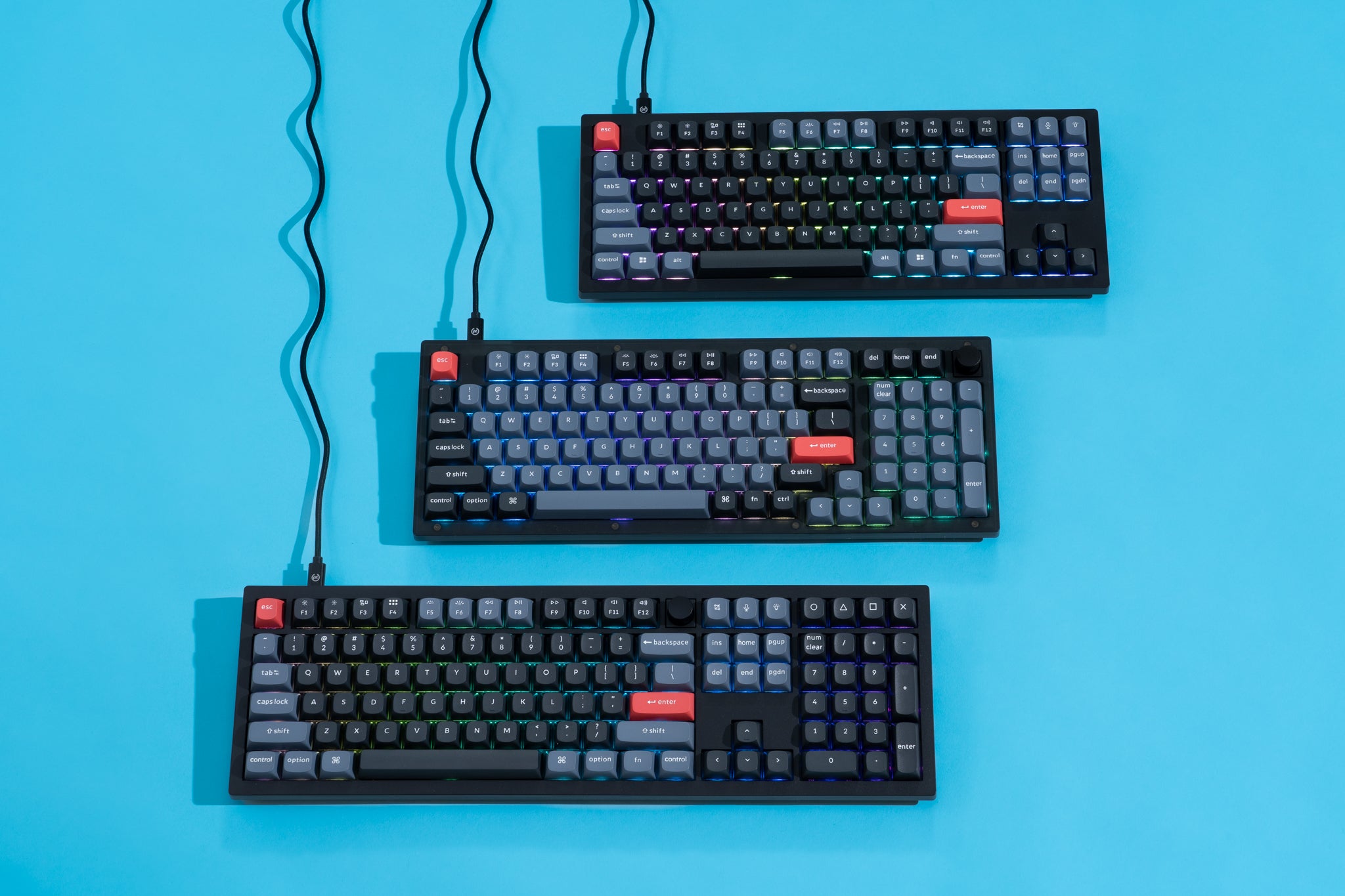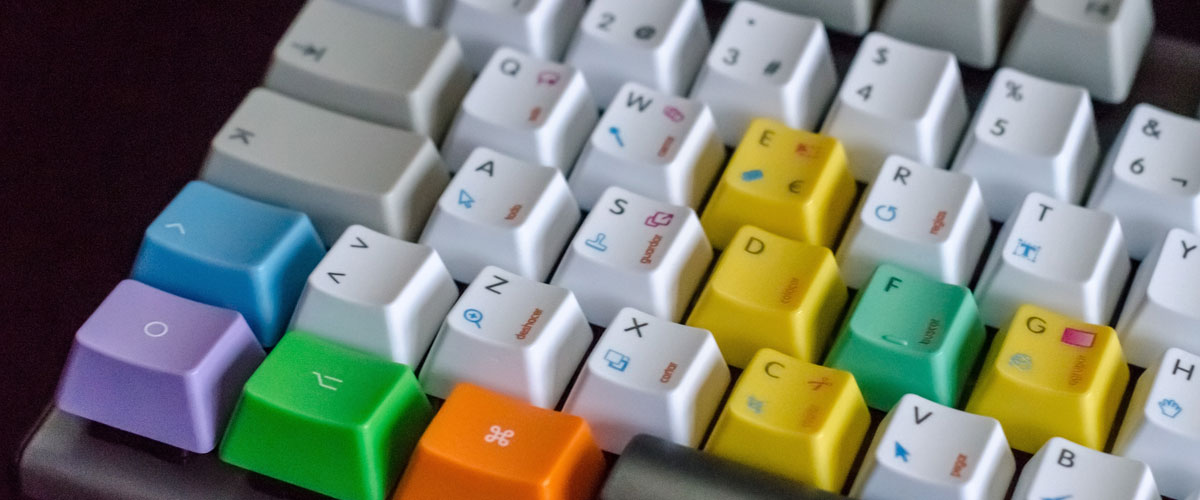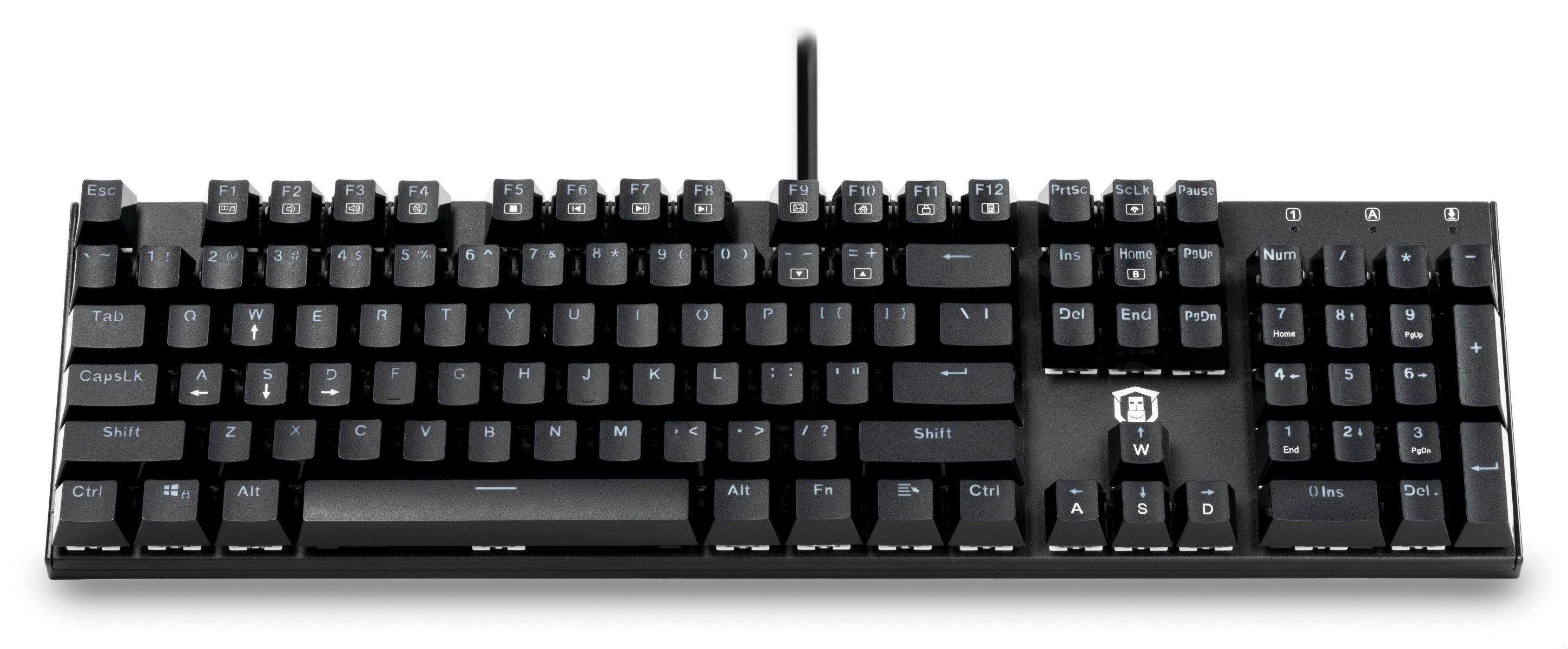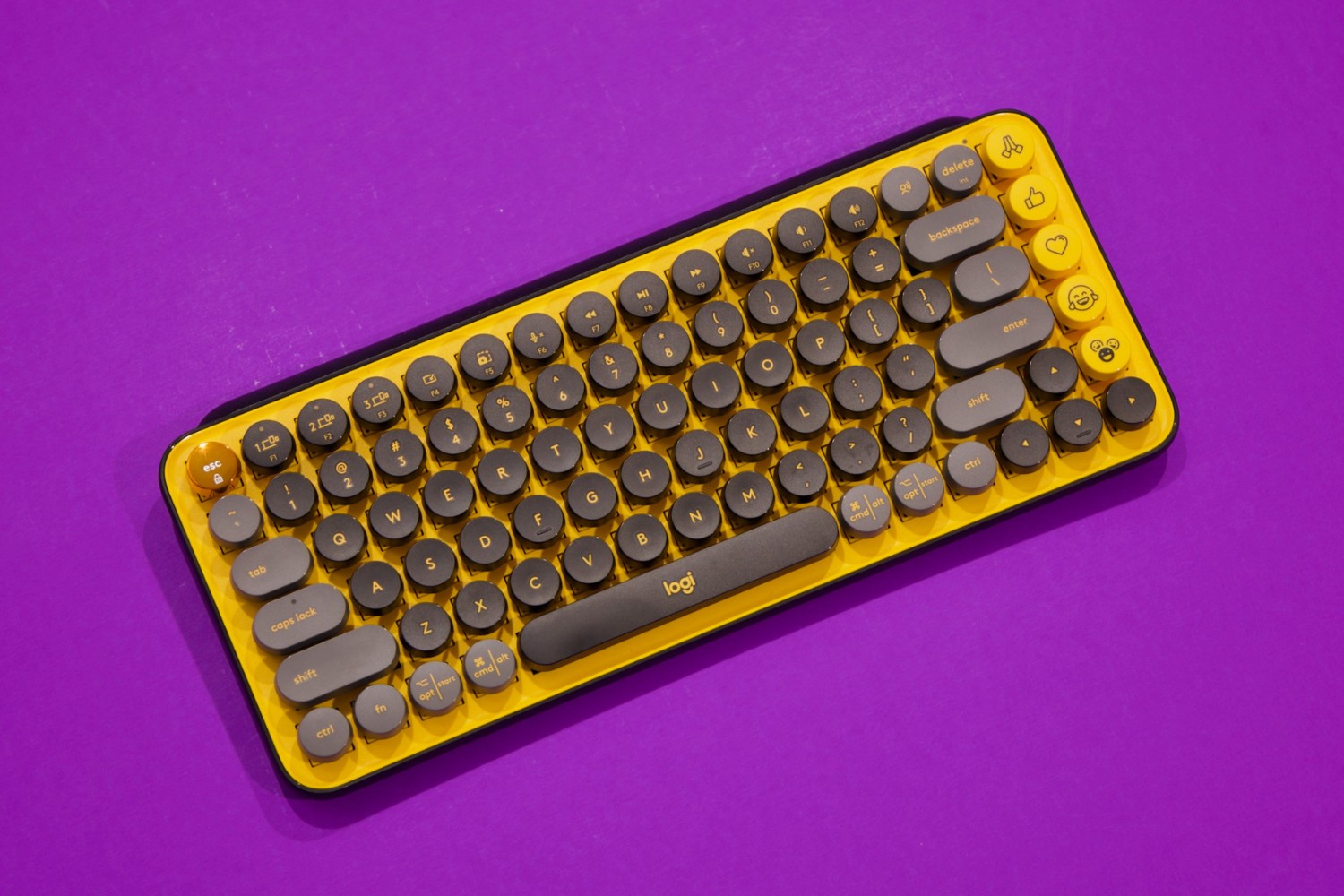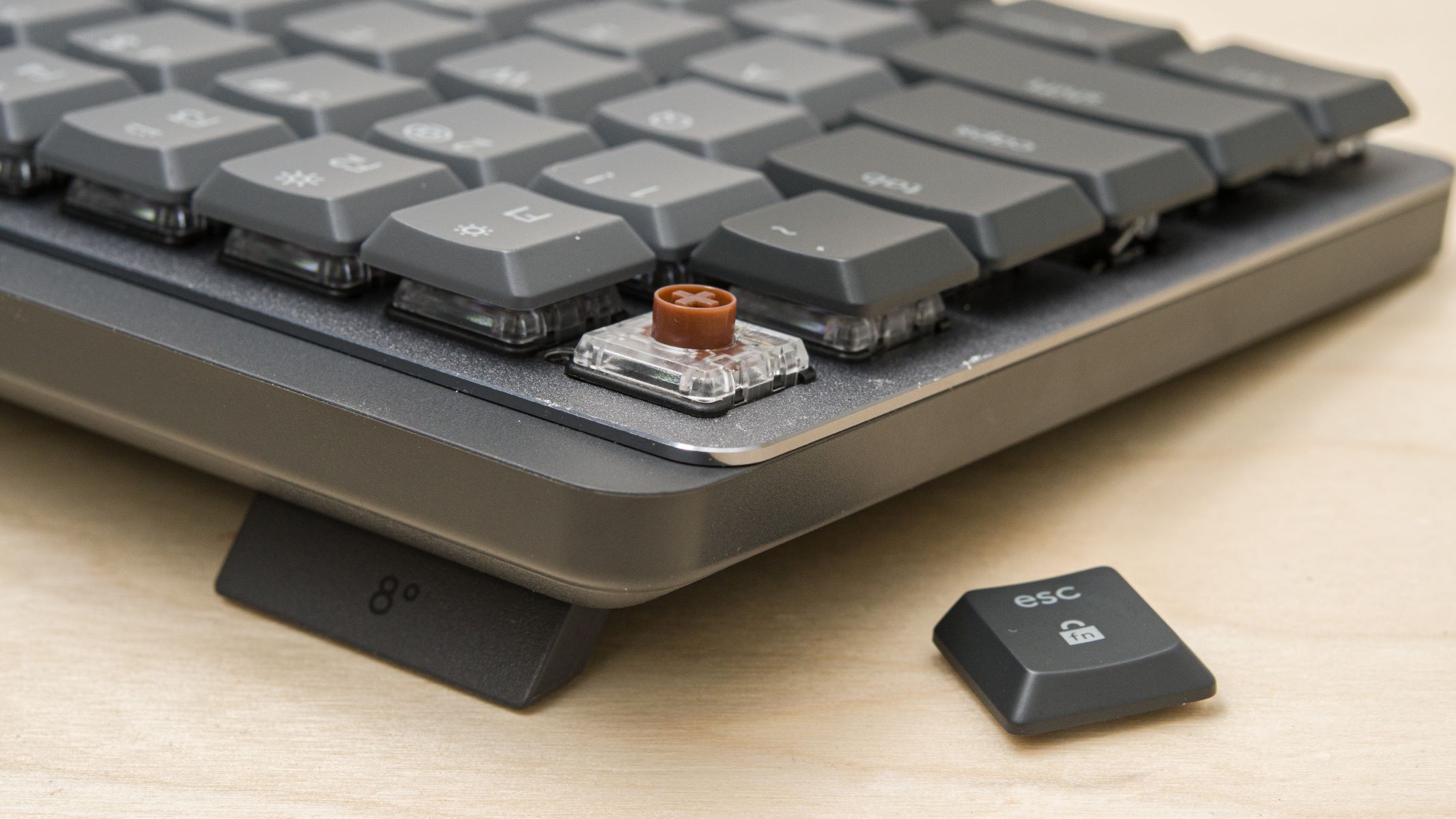Introduction
Welcome to the world of mechanical keyboards! These robust and tactile input devices have gained a dedicated following due to their superior performance and customizable features. Whether you're a seasoned enthusiast or a newcomer to the mechanical keyboard scene, it's essential to understand how to care for and maintain these precision instruments. In this guide, we'll explore the crucial dos and don'ts of mechanical keyboard ownership to help you preserve the functionality and longevity of your beloved peripheral.
Mechanical keyboards are revered for their durability and responsiveness, offering a satisfying typing experience that can enhance productivity and gaming sessions. However, improper handling and neglect can lead to premature wear and damage, compromising the performance and aesthetics of these devices. By familiarizing yourself with the pitfalls to avoid, you can safeguard your investment and ensure that your mechanical keyboard continues to deliver a superior typing or gaming experience for years to come.
Throughout this guide, we'll delve into various scenarios and practices that should be approached with caution or altogether avoided. From the perils of consuming food and beverages near your keyboard to the potential hazards of using harsh cleaners, we'll cover a wide range of topics to help you maintain the pristine condition of your mechanical keyboard. Additionally, we'll discuss the importance of proper maintenance and cleaning routines, as well as the potential risks associated with exposing your keyboard to extreme temperatures.
By the end of this comprehensive exploration, you'll be equipped with the knowledge and insights needed to protect your mechanical keyboard from avoidable damage and deterioration. So, without further ado, let's embark on this enlightening journey to discover the essential guidelines for optimizing the lifespan and performance of your mechanical keyboard.
Eating and Drinking Near Your Mechanical Keyboard
It’s tempting to enjoy a snack or beverage while typing away on your mechanical keyboard, especially during lengthy work sessions or gaming marathons. However, allowing food and drinks near your keyboard poses significant risks that can compromise its functionality and appearance. Crumbs, spills, and splatters can find their way into the intricate mechanisms beneath the keycaps, leading to sticky or unresponsive keys and potential damage to the internal components.
Accidental spills, whether it’s a cup of coffee, a soda, or a water bottle, can have disastrous consequences for your mechanical keyboard. Liquid seeping into the switches can cause corrosion, short circuits, and irreparable damage. Sticky residue from spilled beverages can also impede the movement of keys, resulting in a subpar typing experience. Additionally, crumbs and food particles can accumulate within the key switches, affecting their responsiveness and longevity.
To mitigate these risks, it’s crucial to establish a strict no-food-or-drink policy in the vicinity of your mechanical keyboard. If you can’t resist the temptation, consider using a spill-resistant keyboard cover or a designated tray for snacks and drinks to create a physical barrier between your keyboard and potential hazards. Regularly cleaning your keyboard with compressed air and gentle cleaning solutions can also help remove any debris or residue that may have accumulated.
By being mindful of the perils associated with consuming food and beverages near your mechanical keyboard, you can prevent avoidable damage and maintain its pristine condition. Remember, a few moments of indulgence can lead to costly repairs or the need for a premature replacement, so it’s best to prioritize the protection of your valuable input device.
Using Harsh Chemicals or Cleaners
When it comes to cleaning your mechanical keyboard, it’s essential to exercise caution and use gentle cleaning methods to preserve its integrity. While it may be tempting to reach for strong chemical cleaners or solvents to tackle stubborn stains or grime, doing so can have detrimental effects on the keyboard’s components and aesthetics. Harsh chemicals can cause discoloration, erosion of keycap legends, and damage to the key switches and their housing.
Instead of resorting to aggressive cleaning agents, opt for mild and non-abrasive solutions specifically formulated for electronic devices. Isopropyl alcohol, with a concentration of 70% or higher, is a safe and effective option for removing dirt, oils, and residue from the keycaps and surfaces of the keyboard. When using alcohol or any cleaning solution, it’s crucial to apply it to a microfiber cloth or cotton swab rather than directly onto the keyboard to prevent any liquid from seeping into the switches.
For stubborn grime or debris lodged between the keys, compressed air can be used to dislodge and remove the particles without the need for invasive cleaning methods. Regular maintenance with compressed air can help prevent the accumulation of dust and debris, preserving the keyboard’s performance and longevity.
By adopting a gentle and mindful approach to cleaning, you can maintain the pristine condition of your mechanical keyboard without risking damage from harsh chemicals or abrasive cleaning techniques. Remember, a little care and attention can go a long way in safeguarding your investment and ensuring that your keyboard remains a reliable and visually appealing companion for your computing endeavors.
Excessive Force or Rough Handling
While mechanical keyboards are renowned for their durability, they are not impervious to damage from excessive force or rough handling. Applying undue pressure to the keycaps, forcefully slamming keys, or subjecting the keyboard to physical impact can lead to a range of issues, including misaligned keycaps, bent or broken switches, and internal structural damage.
Typing with excessive force not only accelerates the wear and tear of the switches but also contributes to a jarring and uncomfortable typing experience. Additionally, aggressive key presses can result in the loosening or dislodging of keycaps, detracting from the keyboard’s aesthetics and functionality.
Rough handling, such as dropping or mishandling the keyboard, can have more severe consequences, potentially causing irreparable damage to the internal circuitry and components. Even minor impacts can disrupt the delicate balance of the key switches and compromise the keyboard’s performance.
To mitigate the risks associated with excessive force and rough handling, it’s essential to adopt a mindful and deliberate typing technique, applying only the necessary pressure to register key presses without unnecessary force. Furthermore, handling the keyboard with care and avoiding abrupt movements or impacts can help prevent accidental damage and preserve its structural integrity.
By treating your mechanical keyboard with the respect and delicacy it deserves, you can ensure that it continues to deliver a consistent and satisfying typing experience while minimizing the likelihood of avoidable damage. Remember, a gentle touch and conscientious handling can prolong the lifespan and functionality of your mechanical keyboard, preserving its value and performance for years to come.
Ignoring Maintenance and Cleaning
Regular maintenance and cleaning are essential for preserving the performance and longevity of your mechanical keyboard. Ignoring these crucial tasks can lead to a buildup of dust, debris, and grime, resulting in diminished responsiveness, sticky key switches, and an overall decline in the keyboard’s aesthetics and functionality.
Over time, dust and particles can accumulate within the key switches, impeding their movement and causing inconsistencies in typing feedback. Neglecting to address this accumulation can lead to a decline in typing comfort and accuracy, ultimately detracting from the keyboard’s primary function.
Furthermore, the accumulation of debris between and beneath the keycaps can create an unsightly and unhygienic environment, potentially harboring bacteria and allergens. Regular cleaning not only enhances the visual appeal of the keyboard but also contributes to a healthier and more pleasant typing experience.
To maintain your mechanical keyboard in optimal condition, establish a routine cleaning schedule that includes the removal of keycaps for thorough cleaning, the use of compressed air to dislodge and remove debris, and the application of gentle cleaning solutions to sanitize and refresh the surfaces. Additionally, periodic maintenance, such as inspecting for loose keycaps and ensuring the stability of the keyboard’s housing, can help identify and address potential issues before they escalate.
By prioritizing regular maintenance and cleaning, you can uphold the performance, aesthetics, and hygiene of your mechanical keyboard, ensuring that it remains a reliable and enjoyable tool for your daily computing activities. Remember, a proactive approach to maintenance can prevent the accumulation of debris and the onset of performance issues, prolonging the lifespan and functionality of your cherished input device.
Exposing to Extreme Temperatures
Exposing your mechanical keyboard to extreme temperatures can have detrimental effects on its performance and structural integrity. Both excessively high and low temperatures can pose risks to the keyboard’s components, potentially leading to malfunctions, warping, and irreversible damage.
High temperatures, whether from direct sunlight, heating vents, or electronic devices, can cause the keycaps and keyboard housing to expand and warp. Prolonged exposure to high heat can result in the deformation of keycaps, the misalignment of switches, and the deterioration of the keyboard’s overall appearance. Additionally, extreme heat can affect the internal circuitry and soldering, leading to electrical issues and compromised functionality.
Conversely, exposing your mechanical keyboard to frigid temperatures can lead to stiffness and reduced responsiveness in the key switches. Cold environments can also cause the contraction and brittleness of plastic components, making them susceptible to damage from accidental impacts or handling.
To safeguard your keyboard from the adverse effects of extreme temperatures, it’s crucial to store and use it in a controlled environment with moderate temperature and humidity levels. Avoid placing the keyboard in direct sunlight or near heat sources, and refrain from storing it in unheated or excessively cold areas, such as garages or outdoor spaces during inclement weather.
By exercising care in the placement and usage of your mechanical keyboard, you can mitigate the risks associated with extreme temperatures and prolong its lifespan and functionality. Remember, a stable and moderate environment is essential for preserving the integrity and performance of your keyboard, ensuring that it remains a reliable and enduring tool for your computing endeavors.
Using Incorrect Keycap Removal Techniques
When customizing or cleaning your mechanical keyboard, it may become necessary to remove the keycaps. However, using incorrect or forceful techniques for keycap removal can lead to damage to the key switches and the keycap itself. It’s crucial to employ gentle and appropriate methods to prevent unintended harm to your keyboard during the customization or maintenance process.
One common mistake is using excessive force or pulling at an angle when removing keycaps. This can result in the bending or breakage of the delicate stems on the switches, rendering them ineffective and requiring costly replacements. Additionally, forcing keycap removal can cause the keycap to snap or crack, diminishing its visual appeal and usability.
Another error to avoid is using metal tools or sharp objects, such as screwdrivers or knives, to pry off keycaps. These tools can scratch or gouge the keycaps and the keyboard’s surface, leading to unsightly blemishes and compromising the keyboard’s overall aesthetics.
To safely remove keycaps from your mechanical keyboard, consider using a keycap puller specifically designed for this purpose. Keycap pullers provide a gentle and even distribution of force, minimizing the risk of damage to the switches and keycaps. Additionally, when using a keycap puller, ensure that you exert pressure vertically and evenly to prevent unnecessary strain on the switches and keycap mounts.
By employing proper keycap removal techniques and exercising care and patience, you can customize and maintain your mechanical keyboard without risking damage to its integral components. Remember, a methodical and gentle approach to keycap removal is essential for preserving the functionality and aesthetics of your keyboard, allowing you to enjoy a seamless and visually appealing typing experience.
Disassembling Without Proper Knowledge
Disassembling a mechanical keyboard without the necessary expertise and understanding of its internal components can lead to irreversible damage and compromise its functionality. While it may be tempting to explore the keyboard’s inner workings for customization or maintenance purposes, doing so without proper knowledge and caution can result in costly repairs or the need for a replacement.
One common risk of disassembling a keyboard without adequate knowledge is damaging the delicate key switches and their soldering. Mishandling the switches or applying excessive force during disassembly can lead to bent or broken pins, disrupting the electrical connections and rendering the switches inoperable. Additionally, inadvertently desoldering or damaging the switches can necessitate intricate and labor-intensive repairs that may exceed the keyboard’s original cost.
Furthermore, disassembling the keyboard’s housing without understanding the intricacies of its assembly can lead to misalignment, warping, or breakage of the internal components. Reassembling the keyboard incorrectly can result in an uneven or unstable typing surface, detracting from the keyboard’s usability and aesthetics.
To avoid the pitfalls of disassembling a mechanical keyboard without proper knowledge, it’s advisable to seek guidance from reputable resources, such as manufacturer-provided guides or community forums dedicated to keyboard customization and maintenance. Additionally, exercising patience and caution when exploring the keyboard’s internal components can help mitigate the risks of unintended damage.
By approaching the disassembly process with respect for the keyboard’s intricacies and seeking the necessary knowledge and guidance, you can customize and maintain your mechanical keyboard without compromising its integrity. Remember, a mindful and informed approach to disassembly is crucial for preserving the functionality and longevity of your keyboard, ensuring that it remains a reliable and enduring tool for your computing endeavors.
Using the Wrong Type of Lubricant
Applying lubricant to the key switches of a mechanical keyboard can enhance their smoothness and tactile feel, contributing to a more enjoyable typing experience. However, using the wrong type of lubricant or applying it incorrectly can lead to detrimental effects on the switches and compromise the keyboard’s performance.
One common mistake is using silicone-based lubricants, which can attract dust and debris, leading to the accumulation of particles within the switches and impeding their movement. Additionally, silicone-based lubricants may degrade certain plastics and rubber components, potentially causing damage to the keycaps and switch housings over time.
Another error to avoid is over-lubrication, as applying excessive amounts of lubricant can lead to a gummy or sluggish feel in the switches, detracting from their responsiveness and tactile feedback. Furthermore, excess lubricant can seep into the internal components of the switches, causing malfunctions and requiring extensive cleaning to rectify.
To ensure the optimal performance and longevity of your mechanical keyboard, it’s essential to use a high-quality, thin, and non-silicone lubricant specifically formulated for mechanical switches. These lubricants are designed to provide smoothness without attracting dust and debris, preserving the switches’ responsiveness and tactile feel while minimizing the risk of accumulation and degradation of components.
When applying lubricant to the switches, it’s crucial to use a minimal amount and distribute it evenly to avoid over-lubrication and prevent seepage into the switches’ internal mechanisms. Following manufacturer-recommended guidelines and seeking advice from experienced enthusiasts can provide valuable insights into the proper application of lubricant for your specific keyboard model.
By using the correct type of lubricant and exercising care and precision during the application process, you can optimize the smoothness and feel of your mechanical keyboard’s switches without compromising their integrity. Remember, a meticulous and informed approach to lubrication is essential for enhancing the typing experience and preserving the functionality of your keyboard, ensuring that it remains a reliable and satisfying tool for your computing endeavors.







